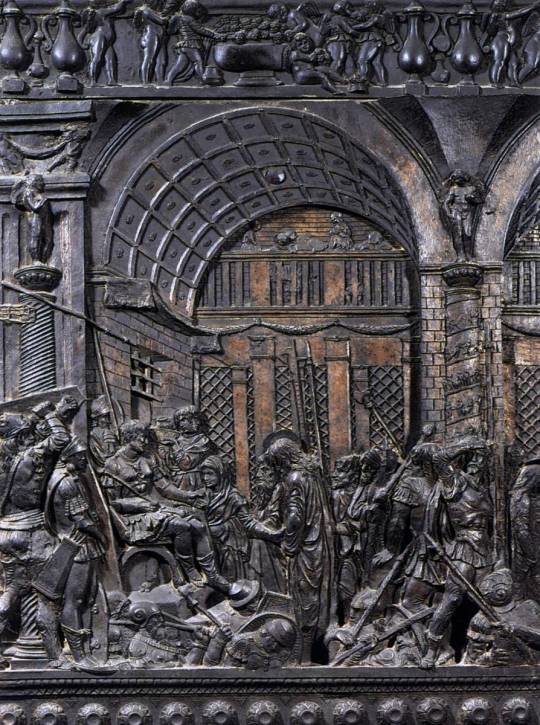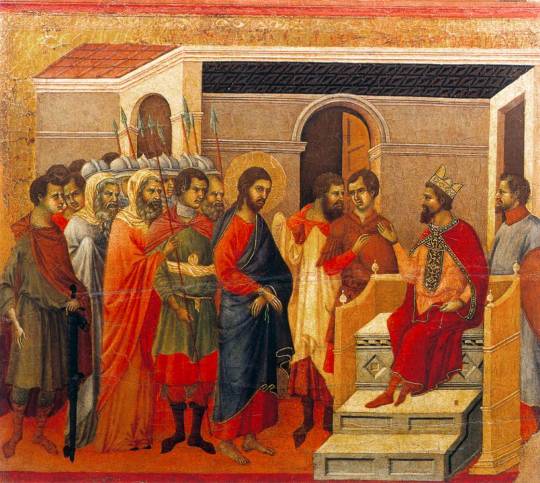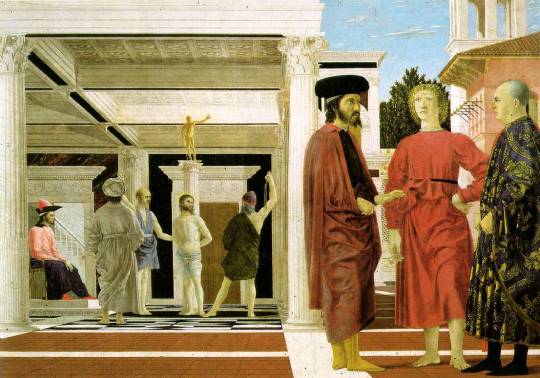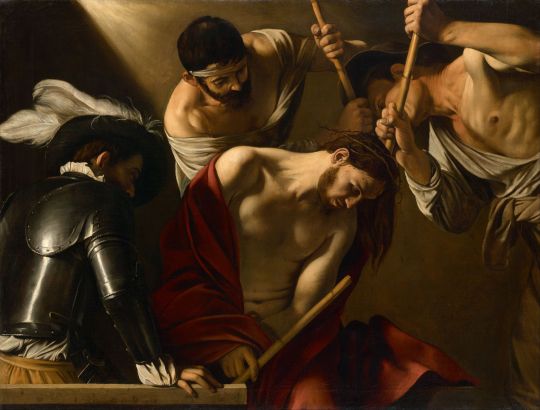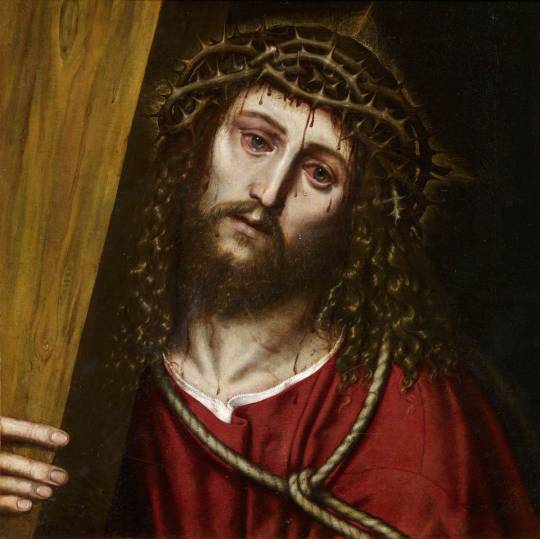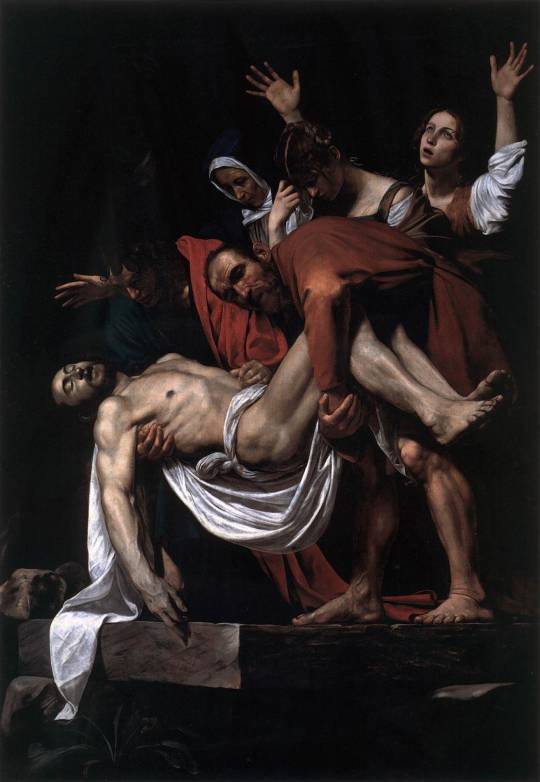Good Friday is traditionally a day of contemplation, penance and the commemoration of the Crucifixion of Christ.
The events of the first Good Friday, began early that long-ago morning with Jesus being taken to stand trial before Pontius Pilate, governor of the Roman province of Judaea (below).
Because Pilate could find no reason to charge Jesus, he was then sent to Herod, who sent him back to Pilate.
Although Pilate still considered Christ innocent, he was swayed by the crowds and sentenced Jesus to death. Below he is shown washing his hands of the situation.
Prior to execution, Christ was subjected to various tortures including flagellation (below), crowning with thorns (below) and bearing his own cross (below).
When Jesus arrives in Calvary, he is hoisted onto the cross and nailed upon it (below). A sign was attached to the construction that read, “INRI,” which stands for Iesus Nazarenus Rex Iudaeorum (Jesus of Nazareth King of the Jews). Despite his agony, Jesus pleads, “father forgive them, they know not what they do.”
While he is slowly dying, Jesus is insulted, pierced in the side with a sword and the soldiers cast lots for his clothing. According to scripture, the sky darkened and Christ is said to have cried out, “My God! My God! Why have you forsaken me?” And being thirsty, he is passed a water-filled sponge. Realising that the end of his earthy life is fast approaching, Jesus proclaims, “It is finished,” and then, “Father, into your hands I commit my spirit.” And with these words, he died.
Jesus was then taken down from the cross (below), his body prepared for burial (below) and finally, he was entombed (below).
Images:
Michelangelo Buonarotti, Christ Crucified, 1492, polychromed wood, Santa Maria del Santo Spirito, Florence. Photo Credit: Alberto Pizzoli/AFP/Art Daily.
Donatello, Christ Before Pilate, 1460-65, bronze, San Lorenzo, Florence. Web Gallery of Art.
Duccio di Buonisegna, Christ Before King Herod, on the reverse side of the Maestà, 1308-1311, tempera on wood, Museo dell’Opera del Duomo, Siena. Web Gallery of Art.
Giambologna, Pilate Washing His Hands, 1598, bronze, Soccorso Chapel, Santissima Annunziata, Florence. Web Gallery of Art.
Piero della Francesca, Flagellation of Christ, 1468-1470, oil and tempera on panel, Galleria Nazionale della Marche, Urbino. Wikimedia Commons.
Caravaggio, The Crowning with Thorns, c. 1602-1604 or 1607, oil on canvas, Kunsthistorisches Museum, Vienna. Wikimedia Commons.
Niccolò Frangipane, Christ Bearing the Cross, 1574, oil on canvas, Museo Carmen Thyssen, Málaga. Web Gallery of Art.
Raphael Santi, Crucifixion (Città di Castello Altarpiece), 1502-03, oil on wood, National Gallery, London. Web Gallery of Art.
Antonio Begarelli, Deposition, 1530-31, terracotta, San Francesco, Modena. Web gallery of Art.
Francesco Bassano, The Lamentation of Christ, 1582-85, oil on slate, private collection. Web Gallery of Art.
Caravaggio, The Entombment, 1602-03, oil on canvas, Pinacoteca Vaticana, Rome. Web Gallery of Art.
References:
Luke 23: 1-46. Matthew 26 and 27: 1-54.
Posted by Samantha Hughes-Johnson.


